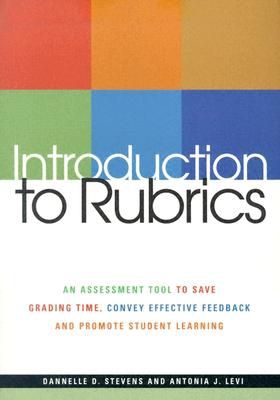Introduction To Rubrics: An Assessment Tool To Save Grading Time, Convey Effective Feedback and Promote Student Learning


Subject
- Education / Evaluation
- Education / Reference
- Grading And Marking (Students)
- Students
- Students/ Rating Of
Plot
You need rubrics if: * You find yourself repeating the same comments on most student papers * You worry that you're grading the latest papers differently from the first * You're concerned about communicating the complexity of a semester-long assignment * You question the consistency of your and your colleagues' grading scales * Grading is taking up far too much of your valuable time Research shows that rubrics save professors' time while conveying meaningful and timely feedback for students, and promoting self-regulated and independent learning. The reason rubrics are little used in higher education is that few faculty members have been exposed to their use. At its most basic a rubric is a scoring tool that divides an assignment into its component parts and objectives, and provides a detailed description of what constitutes acceptable and unacceptable levels of performance for each part. Rubrics can be used to grade any assignment or task: research papers, book reviews, participation in discussions, laboratory work, portfolios, oral presentations, group work, and more. This book defines what rubrics are, and how to construct and use them. It provides a complete introduction for anyone starting out to integrate rubrics in their teaching. The authors go on to describe a variety of processes to construct rubrics, including some which involve student participation.They demonstrate how interactive rubrics--a process involving assessors and the assessed in defining the criteria for an assignment or objective--can be effective, not only in involving students more actively in their learning, but in establishing consistent standards of assessment at the program, department and campus level.
Personal
| Owner | CTL |
|---|---|
| Location | EGGC 702A (1) & Tower House 208 (1) |
| Quantity | 2 |
| Read | |
| Added Date | Jul 11, 2013 16:26:26 |
| Modified Date | May 31, 2016 22:55:34 |


 English
English  Nederlands
Nederlands  Deutsch
Deutsch  Français
Français  Español
Español  Magyar
Magyar  српски
српски  Dansk
Dansk  Svenska
Svenska  Slovenčina
Slovenčina  Português
Português  Movie Cloud
Movie Cloud Book Cloud
Book Cloud Music Cloud
Music Cloud Comic Cloud
Comic Cloud Game Cloud
Game Cloud